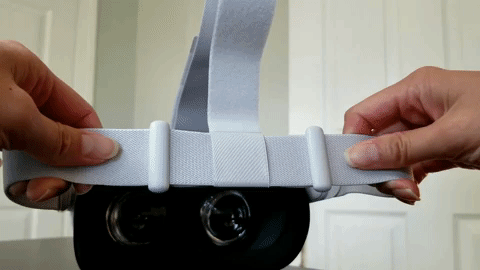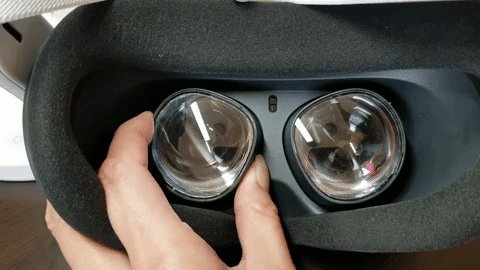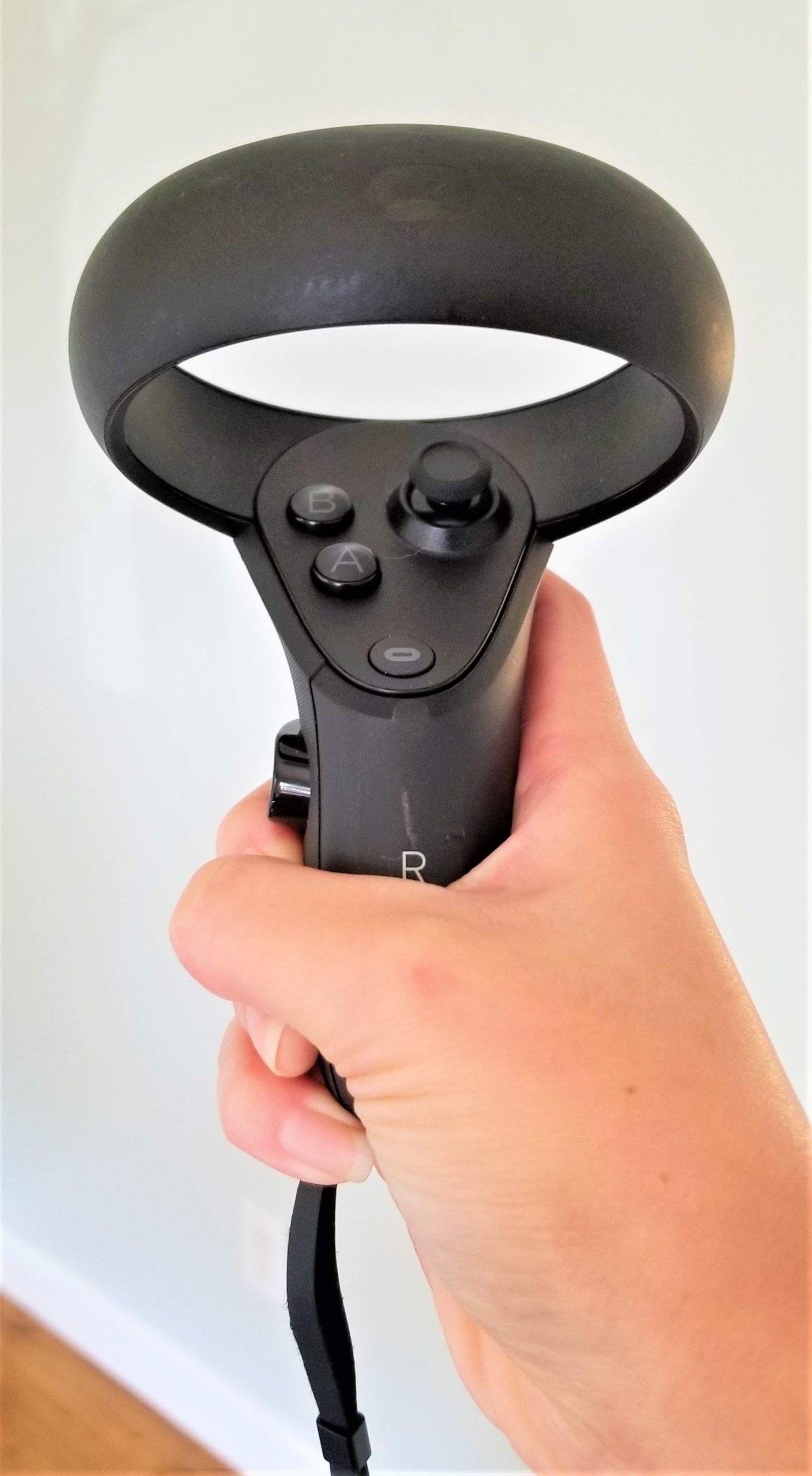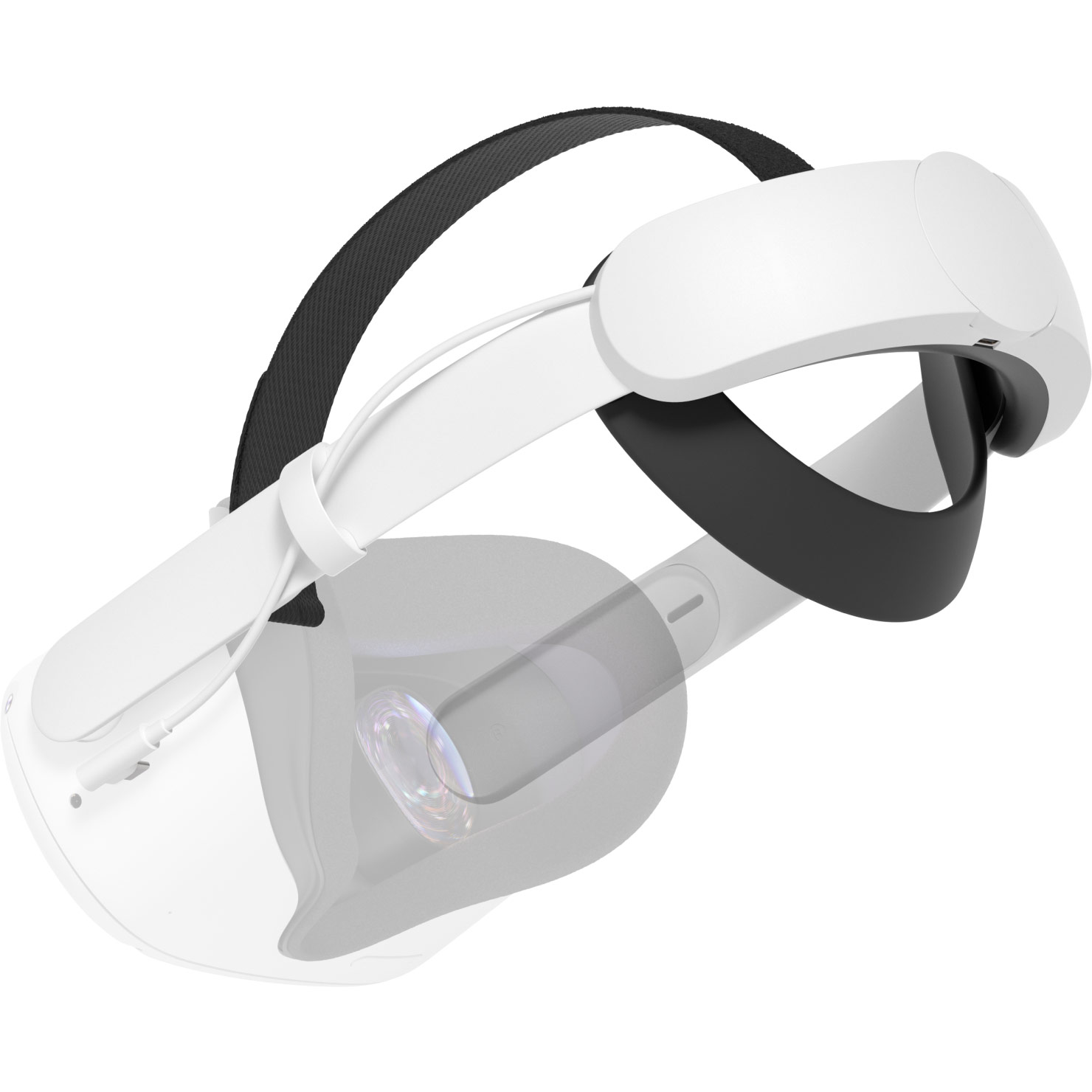OCULUS QUEST 2 REVIEW

Written by Jane Nguyen
The biggest news to come out of this year’s Facebook Connect event was the release of the Oculus Quest 2. Like the original Oculus Quest, it’s a standalone, inside-out, 6-degrees-of-freedom virtual reality headset that runs on a fast-growing platform with a vast library of popular games and experiences. I’ve had the pleasure to unbox and share my initial thoughts of the device and how it compares to the previous model. Read on.




The best-selling point of the Quest 2 is the price, while giving you all the best technology and a plethora of popular content a standalone headset can offer on the current market.
The Quest 2 headset is smaller in build, but it feels just as heavy as the Quest. Other reviewers are clocking in the Quest 2 being 72 grams lighter than the first, but I’m finding it negligible to notice a difference. The straps are made of all elastic, and it has a different adjusting system than the Quest. It takes some fidgeting to get used to, but I find these new straps makes it slightly easier to slip on and off your head.


The lens spacing is manually adjustable by spreading the lenses with your fingers on multiple ridges, which is not as fine of an adjustment as on the Quest. This is not a big downside as I was able to find a perfect setting on the simpler, less fine adjustment on the Quest 2 without issue. In fact, it is easier to remember the number “2” to place my lens, so no matter which of my family members use it, I can move it back to “2” without trying to fine-tune it on the Quest. You can find that number between the lenses. However, one initial inconvenience of this new system is that you cannot adjust the lens with the device on your head. If your vision is blurry, it is suggested that you take it off to select one of three positions. Do that a couple more times until it’s clear, and you may have grown a bit frustrated. But that’s a one-time action if you remember your number.


The LCD panel of the Quest 2 offers a higher resolution than the Quest OLED panel. At 1832×1920 resolution per eye, it gives you 50% more pixels resulting in more clarity and reduces the appearance of the screen door effect.
The foam that touches your face is grippier on the Quest 2 to reduce sliding and the need to reposition the headset. However, I have yet to get sweaty enough to judge if the foam stays just as grippy. Luckily, if you’re a clean freak like me, the foam faceplate is removable for the ability to rinse it, just like the original easily.
If you already have an Oculus account, your avatar and entire content library are transferred over automatically once you connect to Wi-Fi and pair your headset to the Oculus app on your smartphone. Although you have to re-install games that you have previously purchased, this is simply a matter of installing them, not paying twice.
Speaking of games, not all of them support this new device, but we’re promised that updates are coming from various game studios.
The controllers are the same with all the same buttons, joystick, grip, trigger buttons, and positioning. Two things that are different are the home and menu buttons, which are placed in slightly more convenient locations for your thumb to reach, and now there is a trackpad located next to the AB and XY buttons towards the inside of the controls. Of the games I’ve tested so far, none have integrated the trackpad. Additionally, after a couple of gameplay hours, I’ve found that the controller’s AA batteries are lasting longer than the 1. That cuts down on your battery inventory and keeps game interruption down to a minimum. The battery status on the menu screen is more prominently displayed so that you can keep a better eye on it too.




Pictured: Oculus Quest Original Controller (left); Oculus Quest 2 Controller (right)
Carried over from its predecessor, hand tracking is a relatively new feature that hasn’t changed in the Quest 2. Good lighting is required, just like for the Oculus controllers, and the gestures are simple – move and pinch with either palms up or down. Not all games support hand tracking, and honestly, most can’t be improved by hand tracking. Thus, I’ve only used my hands to navigate the Oculus Menu screens for now. But the option is there as it makes putting on your headset and getting right into a game a very convenient feature if you don’t have a permanent space for VR.
An excellent and thoughtful perk that Oculus has provided with this headset is the accessory kits sold separately for enhanced comfort or efficiency. If you’ve read previous reviews of mine on the Quest 1 or the Valve Index, you know that head comfort is important to me. Naturally, I gravitated to the Quest 2 Elite Strap. There is even an Elite Strap with an integrated battery for long-lasting play. I have yet to try it out, but I’m singing their praise already for adopting the wheel tightening system for better balance and support. I would recommend adding the Elite Strap to your order if you’re already an avid VR player or plan to be. Your cheeks, forehead, and neck will thank you. Another item of interest would be the carrying case specific to the Quest 2. If a headset is going to be portable, it needs to be protected, secure, and good-looking if you’re going to bring it anywhere with you.


Photo Credit: oculus.com
Finally, the best-selling point of the Quest 2 is the price, while giving you all the best technology and a plethora of popular content a standalone headset can offer on the current market. It is $100 cheaper than the Quest when it was first released, and still hundreds of dollars less expensive than PC-driven headsets, making its accessibility hard to compete with. The Oculus team at Facebook knows that price will be the driving force to get VR to go mainstream, so if you can get past the mandatory Facebook account conundrum for logging in and playing, which can be a can of worms to open depending on your opinion of it, it is worth jumping on the VR train as a beginner here or continuing your Oculus gameplay with an upgrade. If you’re not a fan of Facebook, there are comparable alternatives, of course, but none as inexpensive and portable as the Quest 2.



